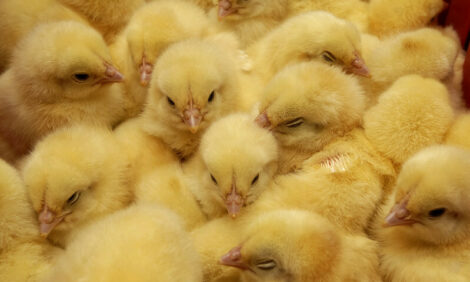



New advancements for young animal nutrition on display in Amsterdam
The Young Animal Nutrition Summit was held on 3 to 4 March in Amsterdam.As global animal agriculture ramps up the pace of innovation to meet the demands and challenges of a new era of production, a broad swath of dramatic advances in science is opening new doors of opportunity to help the industry feed a rapidly growing world.
One of the most promising areas of advancement is the realm of young animal nutrition, where novel science-driven approaches to optimising performance, health, welfare, efficiency and other critical attributes are shaping a new vision of exciting possibilities for the future. Several of the latest advances are featured at the Young Animal Nutrition Summit, 3 to 4 March in Amsterdam.
New solutions to feed a growing world
“Science-based innovation, today more than ever, is the key to the future for livestock production around the world,” says Rob Patterson, Technical Director of Canadian Bio-Systems Inc (CBS Inc), a leading innovation-focused feed technology company and one of the major sponsors of the Summit. “It is essential not only to meet shifting expectations and the need for alternative approaches, but also to meet the daunting challenge of feeding a world of 9 billion people by 2050. The good news is we are seeing excellent examples of innovation internationally that are helping our industry rise to the occasion.”
Among the progress featured at the Summit are examples related to feed composition for young animal development, the potential for maternal nutrition to benefit the progeny, the latest insights into gut health and immunity, effective strategies to replace antibiotics and zinc oxide, and more.
Feed technology rapidly advancing
In the area of feed technology, one of the top recent examples of innovation is the advent of “Yeast Bioactives” technology. Summit featured speaker Dr Elijah Kiarie, Assistant Professor, University of Guelph, Canada, discussed advantages of this novel technology as part of a presentation on opportunities for functional fatty acids and yeast derivatives for poultry – specifically for improving growth, productivity and welfare.
“One of the things we are learning more about is the critical importance of optimising animal nutrition approaches at an early stage,” says Kiarie. “We are discovering it truly has a lifelong impact. By maximising the approaches and advantages with young animals, we set a course for the ultimate success with the end results. Knowing this, it’s very encouraging to see the rising opportunities for improvement at this young animal stage. By taking advantage of the latest science-based knowledge and innovations, we are well positioned to help livestock industries make major advances today and in the years ahead.”
Science powers success
CBS Inc is among the champions of feed technology innovations globally. It developed and launched novel Yeast Bioactives technology last year as a brand new category of feed technology, designed for use as a supplement in diets for poultry, swine and ruminants – including strong applicability to optimise results with young animals during critical early development stages.
For 2020 Yeast Bioactives have been the focus of ongoing rapid market expansion, available in several precision-designed solutions available to producers including most recently via a brand new liquid formulation for use in water.
Aligning with broad industry trends, this technology has emerged among the leading new options for operations in supporting transition to and maintenance of reduced antimicrobial and RWA (raised without antibiotics) systems.
Five major areas of innovation
This technology is a key addition within the CBS Inc portfolio of Feed Science Platforms, which illustrate a number of the major areas of feed technology innovation representing the leading-edge today. The complete range of Feed Science Platforms include: Multi-Carbohydrase enzyme technology, enhanced yeast technology, grain management technology and functional fatty acids, along with phytogenics and probiotics.
“All of the advances we are seeing mean more options for the producer, which is absolutely critical as producers represent the front line of industry progress,” says Kiarie. “With an expanded toolbox, producers can find the best approaches for their operations to meet the demands of the future. This is why it is very encouraging to see all of the examples of progress showcased at the Young Animal Nutrition Summit. If the progress shown here is any indication, we have a bright future to look forward to in animal agriculture.”










